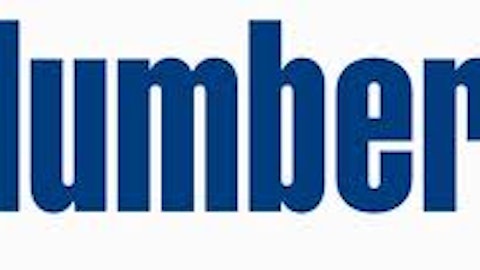Halliburton Company (NYSE:HAL) shareholders have witnessed a decrease in hedge fund interest recently.

To most shareholders, hedge funds are viewed as slow, old investment vehicles of years past. While there are more than 8000 funds in operation at present, we look at the aristocrats of this group, close to 450 funds. It is widely believed that this group controls the majority of all hedge funds’ total asset base, and by monitoring their best stock picks, we have formulated a few investment strategies that have historically outstripped the S&P 500 index. Our small-cap hedge fund strategy outpaced the S&P 500 index by 18 percentage points annually for a decade in our back tests, and since we’ve began to sharing our picks with our subscribers at the end of August 2012, we have outpaced the S&P 500 index by 25 percentage points in 6.5 month (check out a sample of our picks).
Equally as key, optimistic insider trading sentiment is a second way to parse down the marketplace. Obviously, there are lots of stimuli for a corporate insider to drop shares of his or her company, but just one, very obvious reason why they would initiate a purchase. Various empirical studies have demonstrated the useful potential of this tactic if you understand where to look (learn more here).
Consequently, let’s take a glance at the recent action regarding Halliburton Company (NYSE:HAL).
How have hedgies been trading Halliburton Company (NYSE:HAL)?
In preparation for this year, a total of 50 of the hedge funds we track held long positions in this stock, a change of -9% from the previous quarter. With the smart money’s capital changing hands, there exists a select group of noteworthy hedge fund managers who were increasing their holdings substantially.
When looking at the hedgies we track, Jeffrey Ubben’s ValueAct Capital had the largest position in Halliburton Company (NYSE:HAL), worth close to $445 million billion, accounting for 5.7% of its total 13F portfolio. On ValueAct Capital’s heels is Steadfast Capital Management, managed by Robert Pitts, which held a $158 million position; 2.2% of its 13F portfolio is allocated to the stock. Remaining peers that are bullish include Leon Cooperman’s Omega Advisors, John A. Levin’s Levin Capital Strategies and Bill Miller’s Legg Mason Capital Management.
Judging by the fact that Halliburton Company (NYSE:HAL) has witnessed falling interest from hedge fund managers, it’s easy to see that there were a few hedge funds that elected to cut their positions entirely in Q4. It’s worth mentioning that Stanley Druckenmiller’s Duquesne Capital sold off the largest stake of all the hedgies we track, worth close to $35 million in stock., and John Thaler of JAT Capital Management was right behind this move, as the fund dropped about $34 million worth. These bearish behaviors are important to note, as total hedge fund interest fell by 5 funds in Q4.
How are insiders trading Halliburton Company (NYSE:HAL)?
Insider buying is most useful when the company we’re looking at has seen transactions within the past six months. Over the last six-month time frame, Halliburton Company (NYSE:HAL) has seen zero unique insiders purchasing, and 6 insider sales (see the details of insider trades here).
With the returns demonstrated by our studies, retail investors should always pay attention to hedge fund and insider trading activity, and Halliburton Company (NYSE:HAL) is no exception.
Click here to learn more about Insider Monkey’s Hedge Fund Newsletter
Insider Monkey’s small-cap strategy returned 29.2% between September 2012 and February 2013 versus 8.7% for the S&P 500 index. Try it now by clicking the link above.

